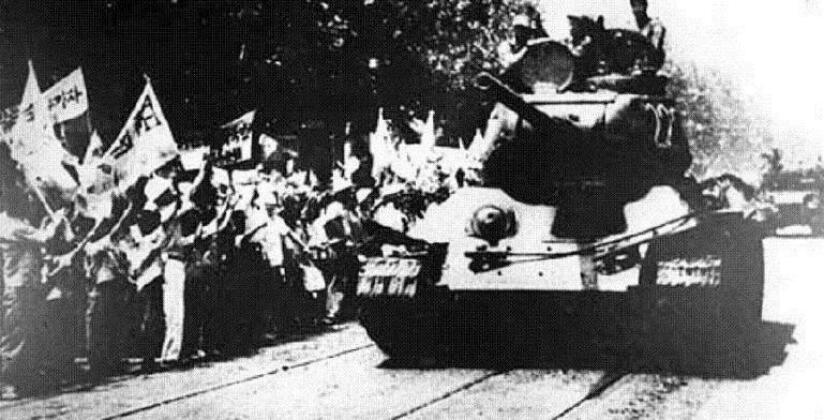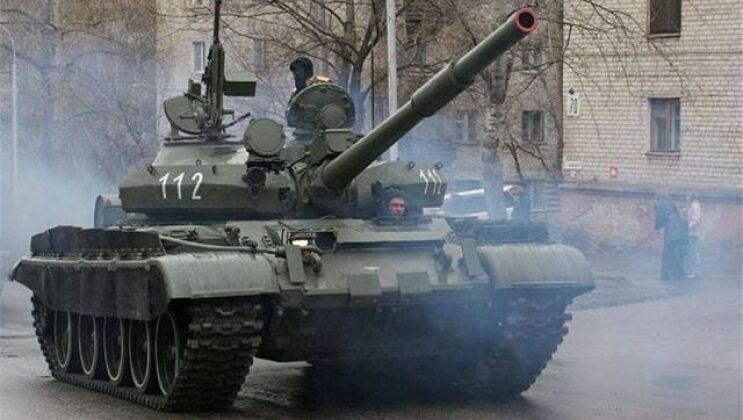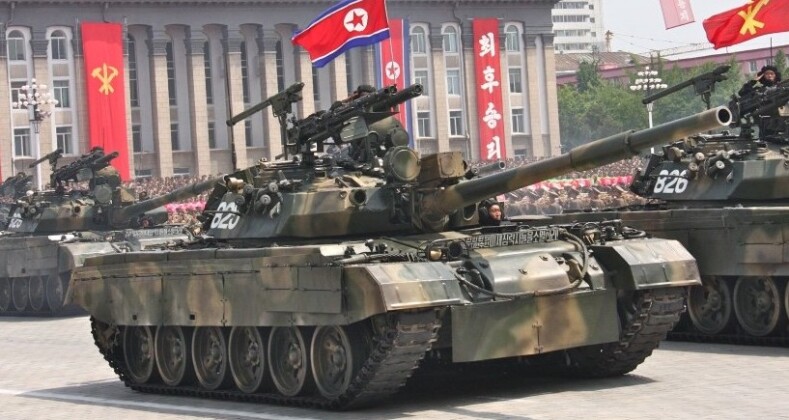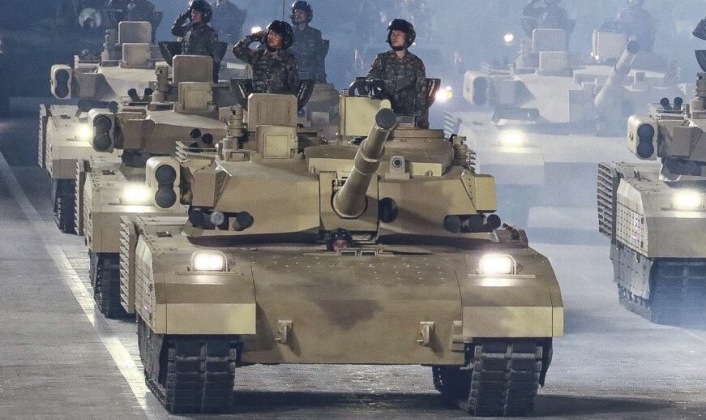News
The Pokpung Ho Forms the Backbone of North Korea’s Tank Divisions: How Capable Is It?
North Korea’s defence sector has long been among the most self reliant in the world particularly among those of smaller countries, and although it’s most well-known products have included weapons of mass destruction, ballistic missiles, submarines and a nationwide network of hardened tunnel fortifications, it also produces a wide range of more conventional assets. Aside from the air force, all branches of the country’s armed forces rely predominantly on domestic armaments particularly for newer weapons systems where indigenous production was established more recently. During the early stages of the Korean War battle tanks were a significant and well used asset which, according to American reports, were instrumental in allowing a North Korean force of 70,000 personnel to engage and repeatedly defeat a South Korean and American combined force of over 140,000 in the conflict’s opening months. The country’s armed forces have continued to invest in armoured warfare alongside extensive asymmetric capabilities ever since, developing several indigenous battle tanks, heavy artillery pieces and anti armour munitions.
 Having produced and exported the Chon’ma Ho in the 1980s, which was very closely based on the Soviet T-62, North Korea sought to develop a new tank class to counter the more modern tanks being deployed by South Korea and the United States. The Pokpung Ho, otherwise known as Chonma-215 and Chonma-216 depending on the variant, was thus developed with an entirely new turret and heavily modified elongated hull with two additional wheels. Otherwise known as the Songun Ho, the design was heavily influenced by the technologies of the successful Soviet T-72 and T-80 main battle tanks, the former which is currently in service in approximately 40 countries and continues to form the backbone of Russian armoured units. The tank was notably unveiled after visits by figures in the North Korean leadership to the Russian Uralvagonzavod tank factory, fuelling speculation that the vehicle could have been influenced by Russia’s latest tank class at the time the T-90A. Although no acquisitions of post-Soviet tank classes are known to have been made, technology transfers from Russia have been widely speculated. The tank’s design notably began at a time when the Soviet Union was approving several technology transfers to Pyongyang particularly in the defence sector in areas ranging from combat aircraft and air defence systems to nuclear technologies, and there is a significant possibility that it benefitted from these transfers particularly as the USSR had previously supported the Chonma Ho program.
Having produced and exported the Chon’ma Ho in the 1980s, which was very closely based on the Soviet T-62, North Korea sought to develop a new tank class to counter the more modern tanks being deployed by South Korea and the United States. The Pokpung Ho, otherwise known as Chonma-215 and Chonma-216 depending on the variant, was thus developed with an entirely new turret and heavily modified elongated hull with two additional wheels. Otherwise known as the Songun Ho, the design was heavily influenced by the technologies of the successful Soviet T-72 and T-80 main battle tanks, the former which is currently in service in approximately 40 countries and continues to form the backbone of Russian armoured units. The tank was notably unveiled after visits by figures in the North Korean leadership to the Russian Uralvagonzavod tank factory, fuelling speculation that the vehicle could have been influenced by Russia’s latest tank class at the time the T-90A. Although no acquisitions of post-Soviet tank classes are known to have been made, technology transfers from Russia have been widely speculated. The tank’s design notably began at a time when the Soviet Union was approving several technology transfers to Pyongyang particularly in the defence sector in areas ranging from combat aircraft and air defence systems to nuclear technologies, and there is a significant possibility that it benefitted from these transfers particularly as the USSR had previously supported the Chonma Ho program.

The Pokpung Ho uses composite armour, turret reactive armour and laser warning receivers, with newer models seen carrying surface to air missile launchers, Bulsae-3 anti armour ATGM launchers and twin grenade launchers. Its 1200hp engine is thought to provide high mobility particularly due to the tank’s relatively light weight. It remains uncertain whether the Pokpung Ho or other modern Korean tanks have gun launched anti-tank guided missiles, and how much the quality of these and of their HEAT rounds has progressed since the Cold War era. General trends in the country’s defence sector would suggest that North Korea’s modern penetrative rounds are relatively capable to complement the integration of a new generation of main guns onto its tanks. Alongside missiles the Pokpung Ho is armed with a heavy KPV anti-aircraft machine gun, a coaxial machine gun and four smoke grenade launchers. Its primary armament is a 125 mm smoothbore gun, which is the same calibre that has been used on all top end Soviet and Russian tanks since the 1960s and on most higher end Chinese tanks since the 1990s.

The Pokpung Ho tank boasts limited night fighting capabilities including infrared sensors, a laser rangefinder and a searchlight. The lack of modern thermal sights, however, are likely the design’s leading weakness. With the Korean tank’s primary weakness being its sensors, the possibility that new tanks could be employed in command roles alongside them could serve as a force multiplier for older Pokpung Ho and Chonma Ho units. This would mirror how Russia, before widely employing tanks with thermal sights, used its first tanks with such sights the T-80UKs as command tanks for T-80 units. A further shortcoming relative to Russian and South Korean designs, which it shares with American, British and German tanks, is the lack of an autoloader which reduces its rate of fire and increases crew requirements by one third.

How the Pokpung Ho would fare in a conflict on the Korean Peninsula can only be speculated, but the tank has been engineered specifically for war in Korea’s mountainous terrain. Although it is a third generation tank and uses a gun calibre similar to that of the T-72/90, its chassis is very loosely based on that of the T-62 which had lower maintenance requirements and operational costs. Able to climb and fire from extreme slopes beyond the capabilities of most tanks could give the vehicle a significant advantage particularly against heavier vehicles such as the American M1 Abrams, which unlike the Pokpung Ho would struggle to use mountain roads and bridges. At 70-80 tons, depending on configuration, the Abrams is close to twice has heavy and has well over double the fuel consumption. Although the Pokpung Ho is newer than any Western design, in fields such armour protection and sensors it is thought to be considerably behind the latest variants of adversary vehicles. Against top end South Korean K2 Black Panther tanks its disadvantages may be overwhelming, and if facing high end threats the North Korean tank could rely on operating in mountains to gain an advantage.

The Pokpung Ho is expected to see production terminated in the near future, if this has not occurred already, as the Korean People’s Army moves to field a new generation of tanks which bear a very loose resemblance to the Russian T-14 and are speculated to have next generation capabilities. The decision to develop a new generation of tanks was likely influenced by the Pokpung Ho’s diminishing ability to go head to head with the most capable enemy armour. Around 600 tanks are thought to have been produced, meaning they actually outnumber the T-90s in the Russian Army, with the vehicles set to continue to form the backbone of North Korean frontline tank divisions for years to come. Their production played an important role in facilitating the phasing out of ageing Cold War era platforms such as the T-55 from frontline service. The tank’s ability to function as an air defence platform is heavily influenced by North Korea’s defence doctrine, which prioritises equipping all parts of its armed forces including infantry with surface to air capabilities to compensate for the relative weakness of the country’s air force. With the amount of reactive armour seen on the tanks having increased over time, North Korea’s defence industry is expected to continue to modernise the Pokpung Ho chassis with new protection systems, munitions and possibly enhanced engines, although with the vehicles not expected to appear in future parades these will be more difficult to track.












